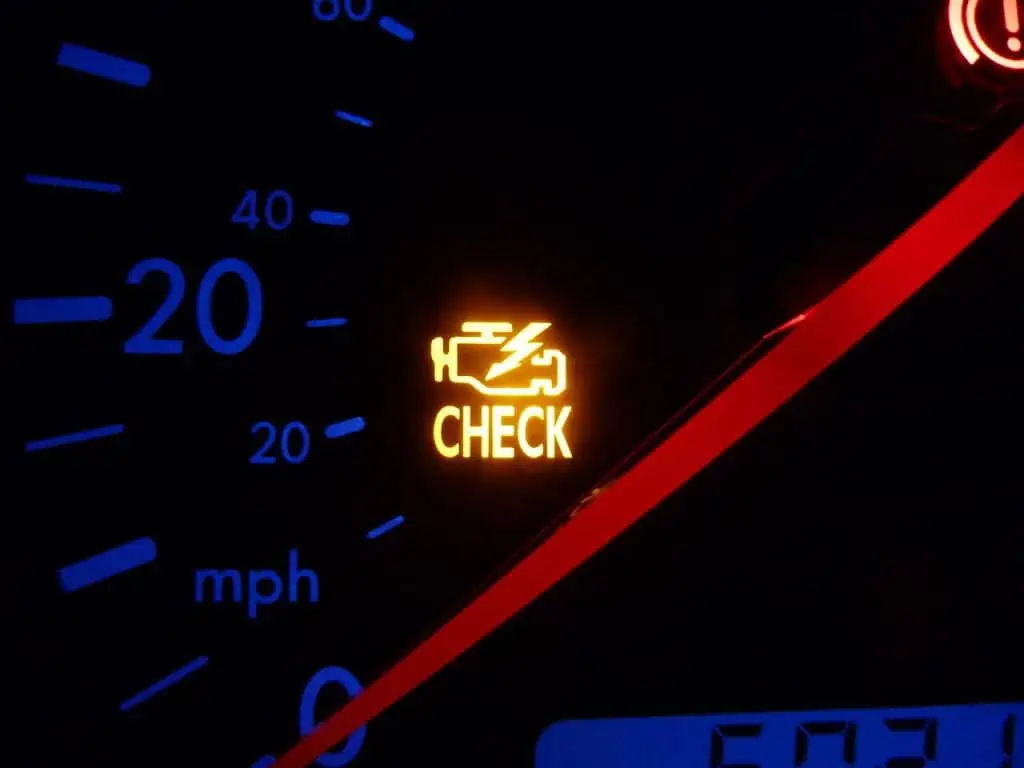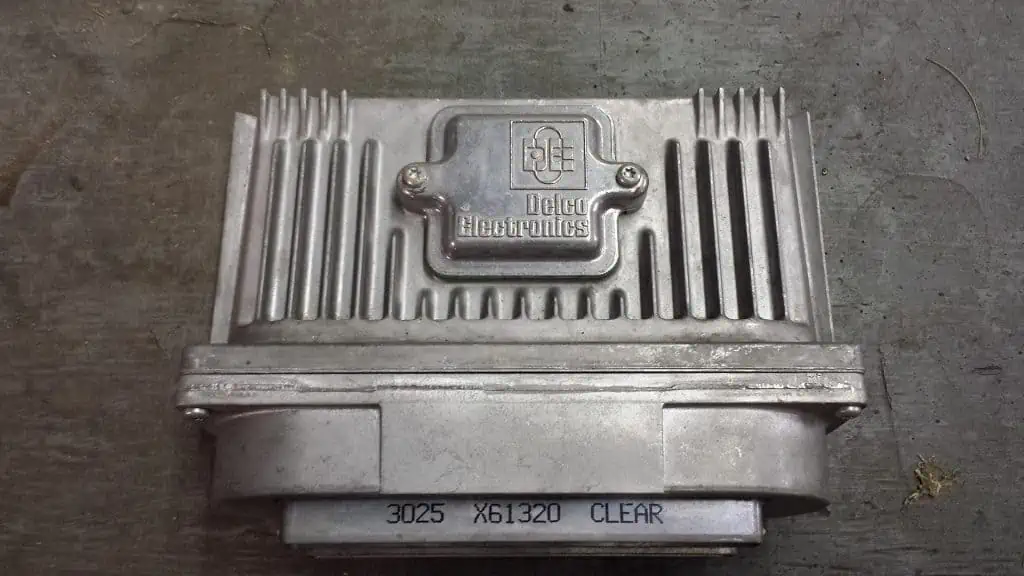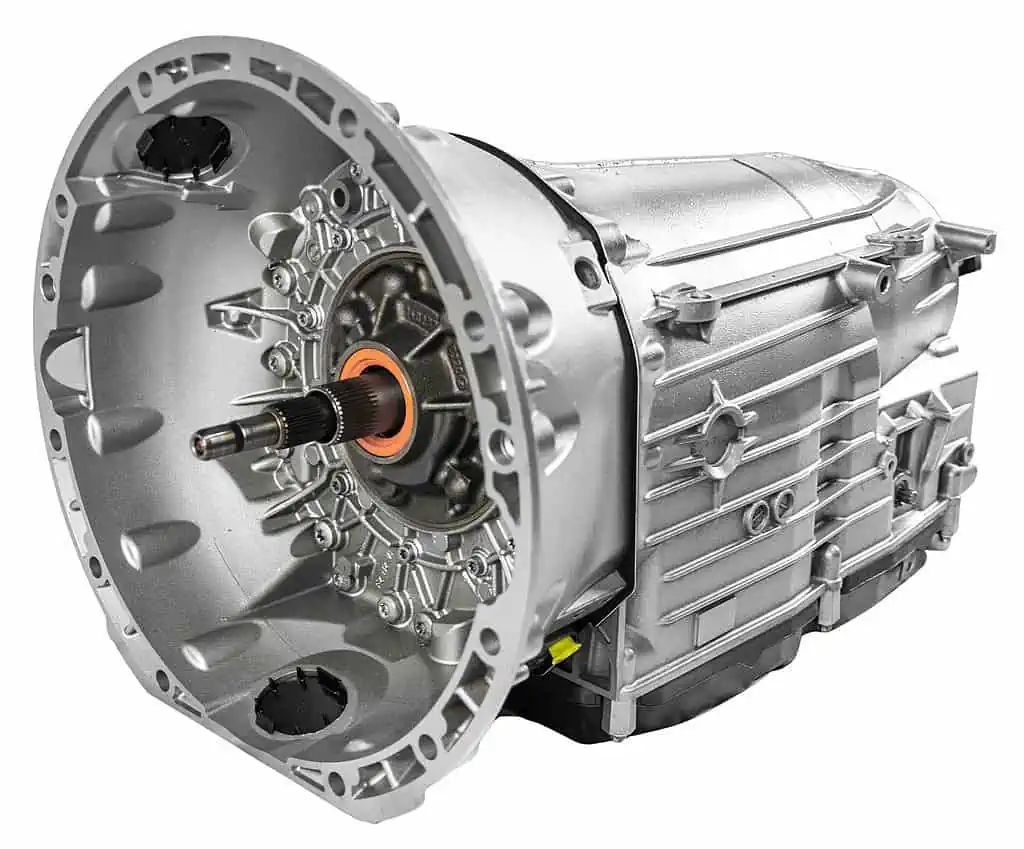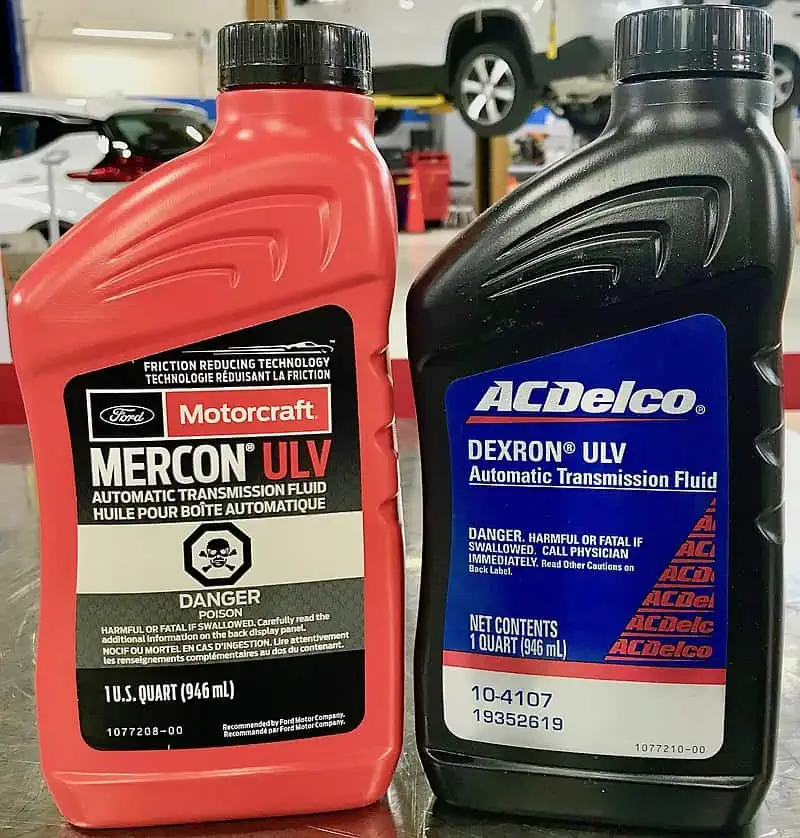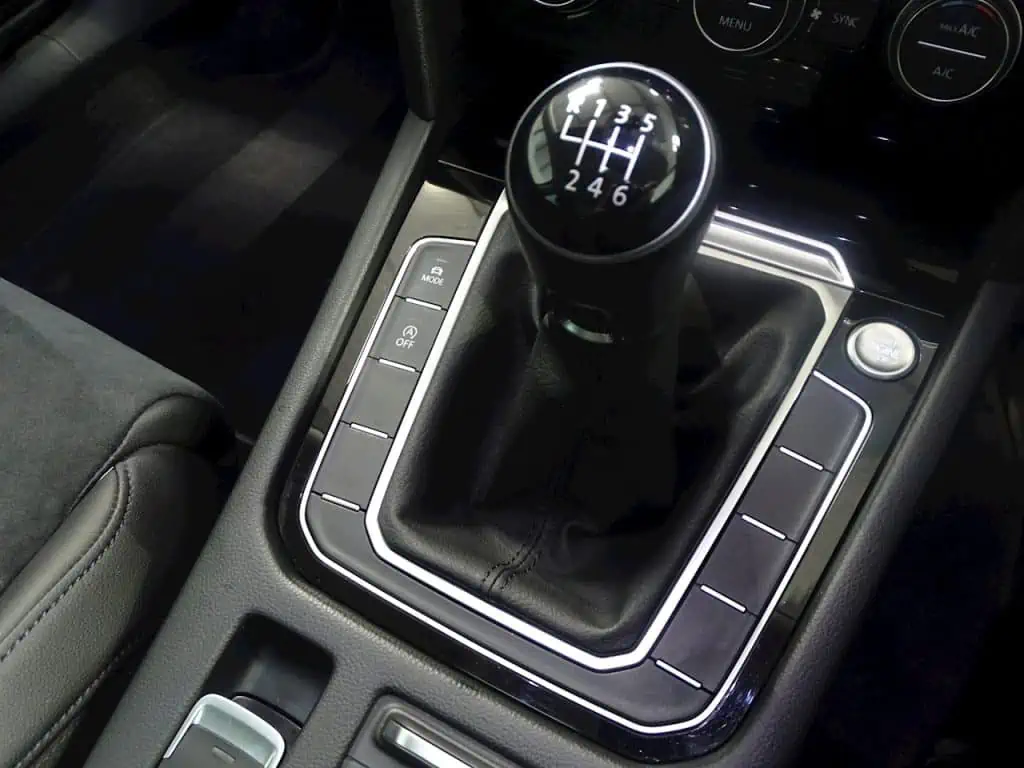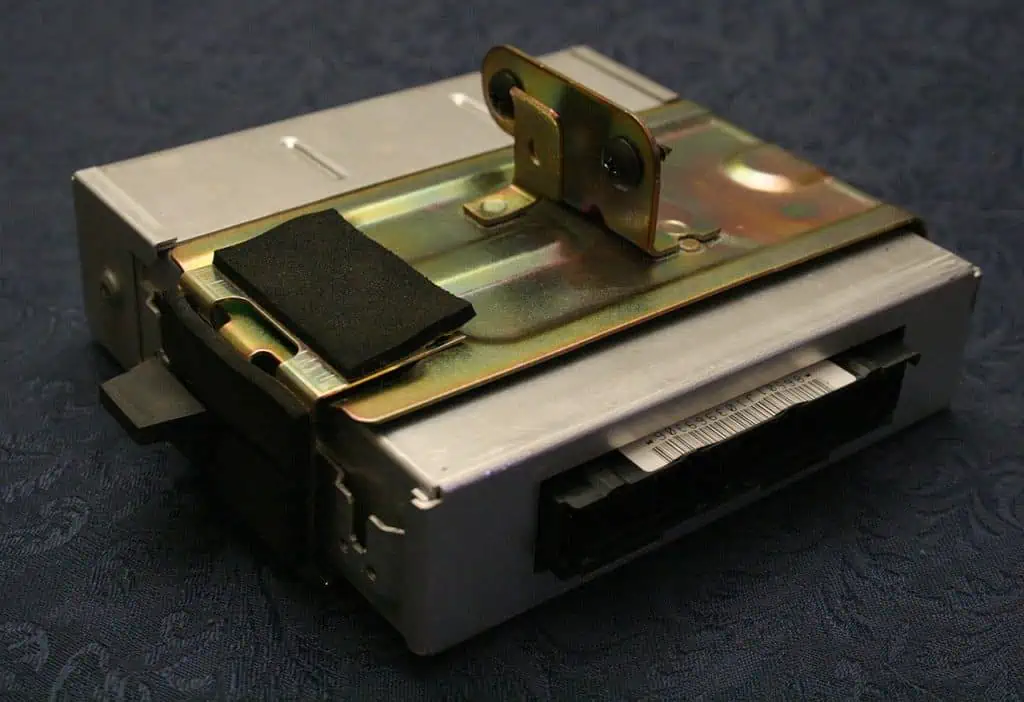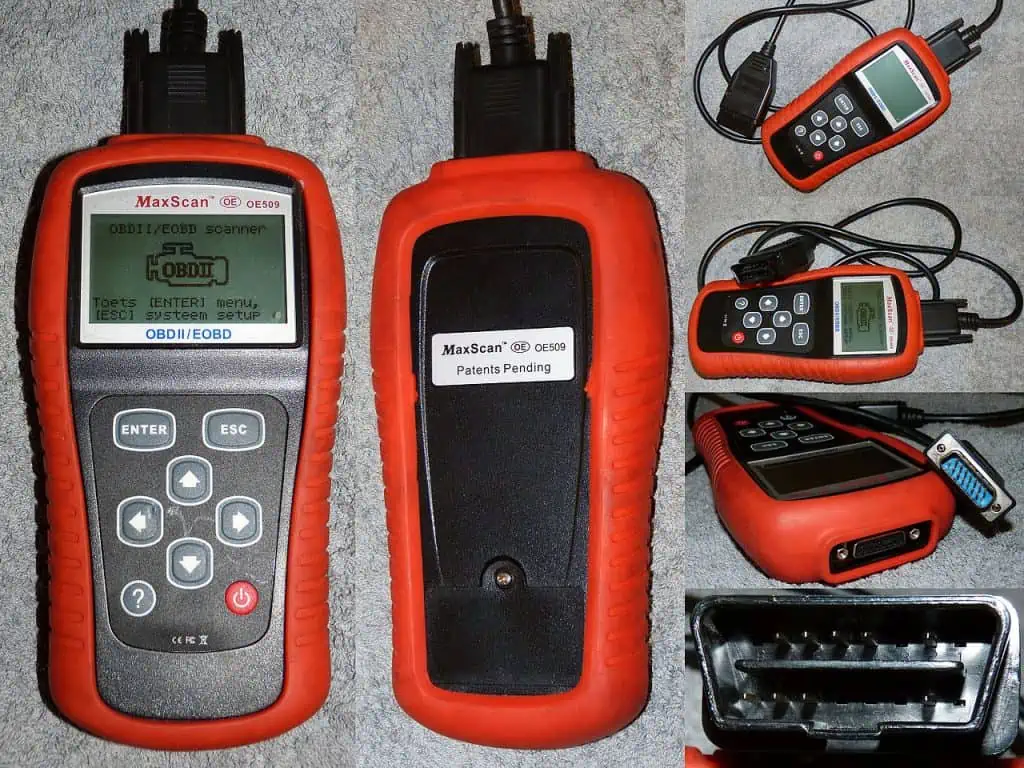Cars with automatic transmissions typically contain a control module that instructs other components, most significantly the gear, what to do.
You must pay attention to this control module if a problem arises or if it begins to exhibit any bad symptoms so that it may be quickly fixed.
Some signs of a failing gearbox control module are rather clear, while others need careful attention to the car. Yet, continuing to drive the car while you ignore these indications might be unsafe and cause catastrophic harm.
You need to comprehend this component of the car you’re working with before we can talk about what happens when a transmission control module goes bad and how to fix it.
Poor fuel economy, trouble shifting up or down through the gears, getting stuck in neutral or first gear, and unexpected unwanted gear shifts are all signs of a faulty transmission control module.
A malfunctioning transmission control module could be to blame if your car’s automatic transmission is giving you problems.
The automatic gearbox is managed by the transmission control module, which is also in charge of choosing the appropriate gear for the vehicle’s speed.
Although diagnosing issues with the gearbox and transmission can be challenging, I always begin with an ECU diagnostic printout. The error code P0700 is typically caused by a damaged transmission control module.
Transmission Control Module: What Is It?
As you are already aware, the gearbox is in charge of sending the force generated by your engine to the wheels. Simply put, your transmission is what propels your car forward; without it, your car would be a stationary object.
An automotive check engine light by Wikiuser100000 / CC BY-SA 3.0. The check engine light is probably the simplest and best indicator of a problem with the transmission control module. The transmission and engine are frequently the two areas of worry when the check engine light goes on.
But for the transmission to function properly and effectively, it too needs help. The transmission control module enters the picture at this point. The TCM would be the transmission’s brain if it had one.
The transmission control module (TCM) is an electronic device that collects information from the transmission, decodes signals provided by various vehicle components (such as the throttle position sensor, turbine speed sensor, fluid temperature sensor, etc.), and aids in controlling gear changing.
It aids in controlling when and how your car changes speed and gears. The TCM may send OBD-II codes that notify you of any transmission problems in addition to supporting the transmission. The check engine light is one frequent fault indicator.
Where Do Manual Transmissions Fit In?
You won’t experience any issues with this component if you’re one of the fortunate people who drives a manual car. Any manual drivers can shift gears on their own without the TCM because its main job is to manage the timing of shifts. The gearbox control module would be you, the driver!
What Should You Look for In a Transmission Control Module That Is Failing?
There is a low likelihood that you will need to replace this component during the useful life of your car. Despite being essential to your car’s ability to drive, this mechanism has been designed to withstand time, miles, heat, and friction.
There are several things to take into account, like driving habits and mileage, but significant temperature changes or misuse can degrade the TCM and make it prone to harm.
Transmission Control Module (TCM): What are the Red Flags Indicating That It Is Failing?
Automobiles are a wonderful innovation that everyone finds to be incredibly useful. They simplify our lives and prevent us from wasting a lot of time on transportation.
However, it is occasionally feasible for your cherished car to start having issues. These issues can sometimes be minor ones, like a flat tire, or they can be serious ones, like an engine breakdown.
These kinds of issues might cause numerous issues and delays in your daily life. So, it is preferable to anticipate these issues in advance so that you may try to have things fixed while still saving money.
As a result, you should always be on the lookout for signs that a damaged gearbox will cause problems down the road. Although it is not difficult to find these indicators, not everyone can see them. To help you spot them, let’s mention some indicators of a failing transmission control module.
1. The Check Engine Light Comes On
The check engine light is most likely the simplest and most effective indicator of a transmission control module issue. When the check engine light is illuminated, the transmission and engine are often the two areas of concern.
To pinpoint the specific problem, you can perform a few simple checks, but you can rule out problems like insufficient engine oil or a flat tire.
A car transmission control module (TCM) by Mgiardina09 / CC BY-SA 3.0. The transmission control module (TCM) is a piece of technology that monitors the transmission, decodes inputs from many parts of the car, including the fluid temperature sensor, turbine speed sensor, and throttle position sensor, and assists in managing gear changes.
Your automobile will be connected to a scanner as the tests are being done, and the scanner will display various codes for various issues with the vehicle. The transmission control module would be malfunctioning if the code P0700 was shown.
2. Unnecessary Gear Changes
The control module controls a large portion of the transmission in vehicles with automatic transmissions. Your automobile will shift into gear at the incorrect moment if there is a transmission issue.
Another sign that your automobile can exhibit is when it abruptly goes into neutral while you’re driving. Since they can result in serious accidents at high speeds, these issues are typically quite dangerous.
3. Problems with Higher Gear Shifting
Have you ever observed that it can be difficult to change into a higher gear? You attempt to go up from second to third, but something seems to be working against you. This indicates that there is a transmission issue that needs to be resolved right away.
A comparable issue with an automatic transmission may manifest with a somewhat different symptom. When it is time for the transmission to change to a higher gear, you could occasionally find that nothing happens.
Although the RPM keeps rising, the transmission does not change into a higher gear. When this occurs, it only denotes that the transmission control module is malfunctioning. Allowing such issues to persist will result in far more serious issues and drain your finances.
4. Problems with Lower Gear Shifting
Similar to issues with changing to a higher gear, issues with changing to a lower gear are indicative of issues with the transmission module.
On a one-lane road, you spot a brief window of opportunity to pass the driver in front. You must downshift to gain acceleration, but you encounter some obstruction that prevents you from downshifting effectively. This is a red flag that the transmission is malfunctioning.
When downshifting, an automatic gearbox, such as a transmission control module Mazda 3, might also experience problems. The transmission control module should ideally downshift the gear automatically when you slow down.
However, this does not always occur, and this may indicate issues with the transmission control module.
This needs to be examined because it could pose a serious problem.
5. Having Trouble Shifting from Gears
Being stuck in one gear is a very unexpected and uncommon circumstance. When the transmission module experiences significant issues and glitches, this occasionally occurs.
If the gear gets stuck in the first or second, it can be dangerous, but most of the time it merely causes some little pain.
If the gear is stuck in any of the two, it is simple to move the car into the drive; however, if the gear is stuck in a higher gear, you might not be able to move the automobile to the service station.
6. Prolonged Shifting
Transmission shifting delay is a very typical issue that affects many older vehicles. Shifting delay is essentially when the gear shifts to an upper or lower gear more slowly than usual.
As you are driving, especially when going uphill, this might lead to many issues. You will lose speed rather than gain it if you delay changing gears.
A Mercedes Benz transmission by Leoiii6382 / CC BY 4.0. In automobiles with automatic gearboxes, the control module oversees a sizable amount of the transmission. A gearbox problem will cause your car to change into gear when it shouldn’t.
It also gets dangerous when you are attempting to pass a car and accelerate, but the car does not follow through due to the delay. You should always take the delay issue seriously and get it addressed as soon as you can because it might lead to major consequences.
7. Low Fuel Efficiency
Although it is neither the most significant nor the most deadly transmission control issue that exists, there is still a problem.
In the modern world, fuel economy is extremely important because, in the first place, poor fuel economy means paying more money, and, in the second place, the world is rapidly running out of fuel. As a result, a car with poor fuel economy is thought to be harmful to the environment.
8. Excess Accumulation of Transmission Heat
There are several causes for transmission overheating, including a faulty TCM. The transmission becomes stuck in a lower gear when pulling big weights or accelerating quickly to higher speeds.
As a transmission overheats, the parts and the transmission oil become less effective, which could lead to more issues. Have a skilled transmission technician inspect the TCM and change the transmission oil.
9. Reduced Level of Transmission Fluid
Erratic shifting may be brought on by low transmission fluid. Increases in RPM during shifts, grinding noises, shifting that is irregular, and slipping in and out of gear are all symptoms. These signs may indicate that the transmission fluid is low.
Look under your automobile for unmistakable indications of fluid leaks. Due to the transmission having to work harder with less fluid, you might also notice it overheating by smelling burning. To prevent major harm to the internal transmission components, always stop.
10. Slipping Transmission Gear
When your transmission shifts gears while you’re moving quickly, the transmission can revert to the lower gear, which is an indication of transmission or gear slippage. Possible causes include low transmission oil or a broken transmission control module.
Avoid operating the vehicle over extended distances, while hauling big goods, or up inclines. Slipping gears could prevent acceleration to highway speeds, creating a hazardous situation on the highway with other higher-speed traffic. Internal transmission parts can potentially be harmed.
11. A Jammed Gear In Neutral
When the transmission is locked in neutral, that is another sign of a broken TCM. The transmission is locked in neutral, therefore no matter what position the gear change is in, the vehicle will not move.
In this circumstance, your car cannot be driven and needs to be fixed. Vehicle owners will need to make arrangements for the transportation of their vehicles to a shop for potential transmission repairs and TCM module replacement.
What Is the Role of a Transmission Control Module In a Car?
The heart of any contemporary automatic transmission system is the Transmission Control Module or TCM for short.
The automated gearbox is controlled by the transmission control module. Some of its duties are as follows:
Bottles of automatic transmission fluid (ATF) by Hymn62 / CC BY-SA 4.0. Low transmission fluid can cause erratic shifting. Symptoms include shifting that is erratic, shifting that increases RPM, and slipping in and out of gear. These symptoms might point to low transmission fluid.
- It chooses the optimal equipment for a specific load. This is crucial since balancing the torque-to-power ratio is every transmission’s primary goal.
- It decides when to apply the gear. To maintain the torque and power “flowing” perfectly during acceleration and deceleration, proper timing for the upshifts and downshifts are essential.
- Contributes whenever feasible to fuel efficiency. The “overdrive mode” is best used when “low power, low torque” conditions are present, which is the responsibility of the gearbox control module.
- Receives analyzes and locates issues with the automatic transmission. The transmission control module employs its software settings, much like the Electronic Control Unit (ECU), to establish the conditions essential for putting up data fault codes connected to its sensors and actuators.
- Receives input from other control modules and processes it as well as detects it. The electrical ecology of modern cars functions like a mini-network of computers that share sensor and actuator data. The engine computer (ECU), not the transmission control module sensors, is where the Throttle Position Sensor (TPS), Manifold Absolute Pressure (MAP), and RPM data that are essential for automatic transmission calculations are obtained.
The transmission control module can potentially malfunction even though it is designed to live longer than the automatic gearbox.
A Bad Transmission Control Module: How to Troubleshoot It
Some typical signs of a failing transmission control module have been discussed in this article. Yet, since the transmission control module is the automatic transmission system’s brain, determining the severity of the breakdown is particularly challenging.
You may encounter a partial failure of a complex electronic component, such as the transmission control module, allowing the computer to go into emergency mode and giving you the chance to drive to a repair shop, but you may also experience an abrupt entire failure.
Checking for error codes is the best technique to identify a problem with the transmission control module.
You will likely notice the error code P0700 if the transmission control module is the issue. Depending on your car, it might not be possible to fix the transmission control module, therefore you’ll need to replace it.
I would suggest trying to find a used unit for a lot less money if you are going to attempt to alter it yourself.
So, you must have your automobile checked out by a skilled technician for a comprehensive diagnostic before driving it again if you suspect a faulty or failing gearbox control module.
How Much Does It Cost to Replace a Bad Transmission Control Module?
Depending on the make and model of your car, a new gearbox control module can cost anywhere from $250 to $500.
Assuming you have simple access to the transmission control module, replacing it is not too difficult (see below). It could be worthwhile to attempt replacing it yourself for this reason.
If you choose to alter it yourself, you might need to code it to the car, so if you don’t already have one, you’ll need to account for that.
A car gear shifter by 21C117 / CC BY-SA 4.0. Transmission shifting delay is a relatively common problem that many older automobiles experience. Shifting delay refers to when the gear moves more slowly than usual to an upper or lower gear. This could result in a lot of problems while you are driving, especially while traveling uphill. If you wait too long to shift gears, you’ll lose speed rather than gain it.
One day of labor, which typically costs $150 to $200, might be added to the price if you hire a mechanic to complete the task for you.
You might purchase a used module on eBay or Craigslist to save some money. On average, used transmission control modules can be purchased for as low as $50. A used part can be installed without issue as long as it has been examined and is in good operating order.
You might alternatively try to fix your current module yourself or have a professional fix it for you. Repair costs might range from $50 to $100. The benefit of having the module fixed is that occasionally a used component—especially one from the same year and type of vehicle—can acquire the same issue.
Replacement of a Bad Transmission Control Module
A broken transmission control module can be easily replaced if you have access to the necessary equipment.
CVT automatic transmission accessed from the vehicle’s underside.
You’ll need some diagnostic software and, in most cases, the new module will need to be programmed into the car because it’s kind of like a mini-ECU for the gearbox.
The process will vary depending on the vehicle, however, the following is a quick rundown of what is involved:
- Any error codes that may have been saved in the ECU should be read diagnostically. There is a problem with the transmission control module if you notice P0700.
- Drive the car for a short distance after clearing any error codes. The error will recur and the symptoms will remain if there is an issue with the transmission control module.
- Check the coding process before uninstalling the old module. You will typically need to make a note of the previous settings.
- Disconnecting the battery will allow you to replace the transmission control module.
- Consult a repair manual for your car if you are unsure of where the transmission control module is located. The transmission control module should be simple to access and is frequently found in the engine bay. The module may occasionally be positioned on or close to the gearbox and is difficult to remove.
- Unplug all connectors and take out the mounting screws after locating the transmission control module.
- Make sure to replace all mounting screws and connectors in the proper locations before removing the old module and replacing it with the new one.
- Following installation, reattach the battery.
- You must use your car’s diagnostic/coding software to recode the new module to match it with the ECU.
- After decoding, erase any error codes and drive the car to make sure everything is operating as it should.
Can the Failing Transmission Control Module (TCM) Be Reset?
If it is not damaged, the TCM (Transmission Control Module) might need to be reset. A broken TCM has to be replaced. For specific information on how to reset the TCM for your specific car make and model, look online.
It is worthwhile to give it a shot since you might be able to cut your transmission repair prices significantly. The most important auto repair is a transmission or engine replacement.
Resetting a Failing Transmission Control Module: How Is This Done?
Resetting the transmission control module can occasionally solve transmission issues. The module can be reset to its factory default settings, thereby wiping the memory of any saved settings.
An automotive engine control unit (ECU) by Specious / CC BY-SA 3.0. Notwithstanding the difficulty of identifying problems with the gearbox and transmission, I always start with an ECU diagnostic printout. A broken transmission control module is often the root cause of the error number P0700.
Each car has a unique process for resetting the module. Some can be reset by performing a series of steps, such as repeatedly pressing the accelerator while the engine is off. You’ll undoubtedly discover a method in an internet forum if you search online for your vehicle model.
Using a code reader or OBD 2 scanner is an additional method for resetting the transmission control module. The memory of the transmission control module can be cleared and it can be reset to learning mode on the majority of respectable OBD 2 devices.
If everything else fails, the transmission control module memory can typically be cleared by unplugging the car battery for at least 30 minutes. A word of caution: This procedure can also clear other settings, so make sure you know what you’re getting into by double-checking the vehicle guidebook or online for your specific model.
Transmission Control Module Reprogramming
The most crucial step to resolving the “check gauges” light may be to reprogram your transmission control module. The performance of your vehicle’s electrical system and its effect on your gearbox can alter over time due to a variety of variables.
Your battery or alternator may not be charging properly, for instance, if your car won’t start or gets fewer miles per gallon. It may affect the transmission’s ability to change gears, which could activate the check gauge light.
Is Programming a Transmission Control Module Necessary?
Although produced by different businesses, transmission control modules are fundamentally the same. Every time you swap out the original controller with an aftermarket one, your aftermarket controller or module needs to be reprogrammed.
It also guarantees that you swap out worn-out components for fresh ones. To inform the car’s computer system that other components have been fitted rather than what it is accustomed to seeing, the TCM will need to be reprogrammed.
Also, you run the risk of breaking your new components if your car is not thoroughly inspected before reprogramming. Your car can wind up back in the shop as a result. Because of this, it’s crucial to ensure appropriate operation before introducing additional components.
How Can I Determine Whether My TCM Requires to Be Programmed?
You probably need to have the engine control unit procedure reset if your TCM has failed and the check engine light is on. While some customers have replaced their TCMs without having them programmed and the check engine light is still on, it should only be used as a general guideline.
The diagnostic fault codes won’t be removed from your engine control module after replacing your TCM if you don’t program it beforehand. This, however, does NOT imply that reprogramming is necessary for your car to function correctly or smoothly.
How Much Do Transmission Control Modules Cost to Reprogram?
The transmission control module can be reprogrammed by a dealer or an automotive locksmith. Depending on the vehicle, this can cost anywhere between $70 and $200. For instance, it costs around $140 and takes about two hours to finish a T-Mod on a 2002 Chevy S10 Blazer.
How Long Does a Transmission Control Module Reprogramming Take?
The time required to reprogram a transmission varies based on several variables.
- First, it relies on the vehicle’s make and model.
- Depending on where the car is being serviced, the transmission may need to be reprogrammed.
- It would take less time at a car dealership than if you brought your automobile to a private garage.
A car’s transmission can be reprogrammed in two to six hours. It may take even longer for older vehicles. We advise phoning in advance to set up an appointment if you decide to bring your car to a dealership.
A typical onboard diagnostics (OBD) handheld scanner by Arp. Another way to reset the transmission control module is by using a code reader or OBD 2 scanner. On the majority of acceptable OBD 2 devices, the transmission control module’s memory can be wiped and it can be reset to learning mode.
Can I Check the Transmission Control Module (TCM) at a Collision Center?
Your transmission will shift gears slowly, irregularly, or not at all if your transmission control module fails. Slow gear changes, slippage, and transmission overheating can all result from a lack of transmission fluid. Avert causing your transmission more harm.
A skilled mechanic should examine your transmission. Using a mechanic is always preferable because they can locate the gearbox module quickly without the need for repair manuals. If you are unable to move your gearbox gears, dial a nearby repair shop.
Is Driving Your Car with a Bad Transmission Control Module Safe?
In general, driving a car with a poor TCM is dangerous (Transmission Control Module). It is challenging to drive through traffic due to acceleration, deceleration, unpredictable gear changes, and other factors.
Also, there is a considerable chance that the transmission will sustain additional damage, which might significantly increase the cost of repairs. A damaged transmission is substantially more expensive than a replacement transmission control module.
At What Place Is the Transmission Control Module Situated?
Depending on the type and model of the car, the position of the transmission control module can change. It often sits in one of two places on current cars.
The transmission itself, typically concealed behind the protective coverings attached to the transmission, is the first site. The powertrain control module is the second most likely location.
This module, which also manages numerous other auto systems, is typically found in the engine compartment.
A separate gearbox control module is installed beneath the hood, close to the windscreen, in some vintage automobiles, including BMWs. In contrast to more current automobiles, these components were relatively simple to remove and replace as needed.
The Conclusion
Owners of vehicles may wish to schedule transmission maintenance in addition to standard auto maintenance tasks like changing the oil, testing the brakes for brake repair requirements, checking the battery for a car battery replacement, tire repairs, safety recalls, and general engine maintenance.
Improper car maintenance can result in warranty termination, lower your car’s value, and jeopardize lease agreements. Several people try to sell used cars with TCM issues or exchange vehicles with bad transmissions. Buyers should use caution.
We advise visiting a collision center if you discover a transmission solenoid or TCM issue if you drive a huge, super-duty vehicle like the Ford Escape or Dodge Ram.
If the repair your vehicle needs is too expensive and your insurance claim submission does not accept the repair, you should also reconsider and weigh your options. Auto owners may occasionally be better off trading in their vehicles.
Request a car comparison of the available used inventory from the dealer’s sales department. Clients who are in your shoes, typically offer a sell-us-your-automobile type of deal.
There are frequently a variety of special offers available on the credit application, including the military discount and the dealer discount.
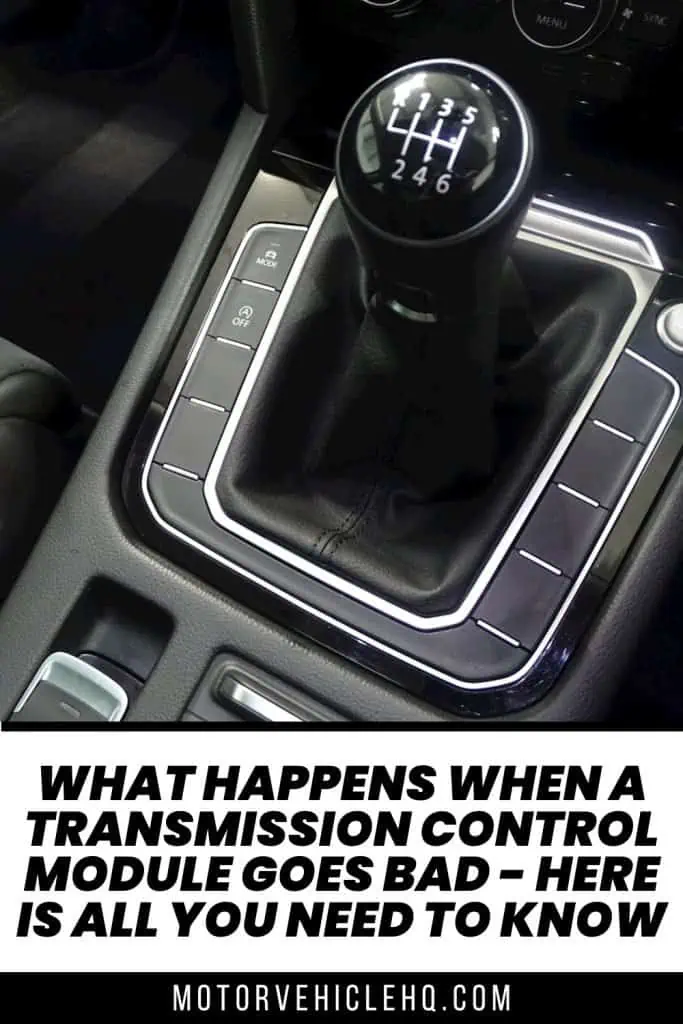
A car gear shifter by 21C117 / CC BY-SA 4.0

Jim Wicks is the founder of MotorVehicleHQ. With over two decades of experience in the automotive industry and a degree in Automotive Technology, Jim is a certified car expert who has worked in various roles ranging from a mechanic, car dealership manager, to a racing car driver. He has owned more than 20 cars over the past 15 years. Ask him about any vehicle you see on the road and he can tell you the make, model and year. He loves the aesthetics of all things cars, and keeps his vehicles in pristine condition.
In his free time, Jim enjoys getting his hands dirty under the hood of a classic car or taking long drives along the country roads. His favorite car? A 1967 Shelby GT500, a true classic that, according to Jim, “represents the pure essence of American muscle.”
